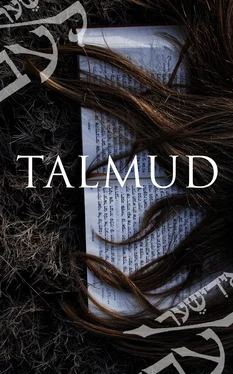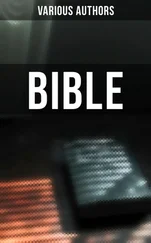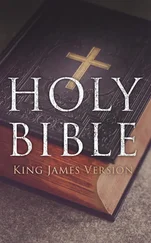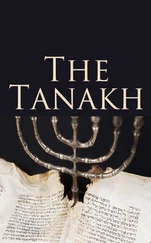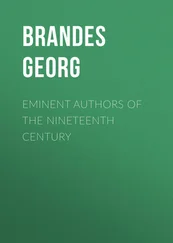The Rabbis taught: Concerning five women who receive from their husbands the means for securing their food and five slaves who receive the means from their masters to procure their sustenance and who live in separate houses in the court, R. Jehudah ben Bathyra permits the women to carry within the court and prohibits the slaves to do so; but R. Jehudah ben Babba on the contrary allows the slaves to carry but prohibits the women to do so.
Said Rabh: "What reason has R. Jehudah ben Babba for his decree? Because it is written [Daniel ii. 49]: 'Daniel remained in the gate of the king,' the inference is, that in the same manner as Daniel did not always remain in the gate of the king, but his office being such that his place was there, so it is also with slaves who, while in the service of their master, are considered as being always at their master's side." It is self-evident that if a son eat and dwell with his father, he need not make an Erub as stated previously. As for a woman who has a husband and a slave who belongs to a master there is a difference of opinion between R. Jehudah ben Bathyra and R. Jehudah ben Babba. How about a disciple, however, who dwells in the same court with his master and derives his sustenance from his master?
Come and hear: When Rabh still dwelt with R. Hyya he said: "We need not join in an Erub because we depend upon the table of R. Hyya," and when R. Hyya still dwelt with Rabbi he also said: "We need not make an Erub because we derive our sustenance from Rabbi."
R. Hyya bar Abhin asked of R. Shesheth: "What about the disciples of the college, who eat in the inns of the valley and pass the night at the college? When the legal limit of two thousand ells is measured where must the starting point be? The college or the inn where they take their meals?" R. Shesheth answered: "The college."
Rami bar Hama asked of R. Hisda: If a father and son, or a master and his disciple, lived in two courts, one inside of the other, and the outer court opened into an entry, what is the law concerning them? Are they to be considered as if they were two distinct individuals who cannot mutually impede each other because each one of them has a right to carry in his own court and a man who is permitted to do so in his own court cannot interfere with a man in another place; hence both father and son, or master and disciple, may carry each in their respective courts; or, shall we consider them collectively because the son or the disciple who lives in a separate court but eats at his father's table has a certain right to his father's court. Thus the father or the master is not in sole possession, but shares it with another. The consequence is that the father or the master is in duty bound to make an Erub in his own court and, on account of this, he becomes one who can interfere with the right of another, and prevents his son from carrying in his own (the son's) court? Then again if they are considered as distinct individuals, are they in duty bound to combine an Erub covering the two courts? Finally if the two courts had separate openings into the entry, are they considered as separate courts and thus the entry becomes valid by the addition thereto of a cross and side beam, or they are considered as one court, and if one court only opens into an entry, the entry cannot be made valid by the addition of a cross and side beam?
Answered R. Hisda: We have learned this in a Boraitha: A father and his son or a teacher and his disciple, providing there are no other inmates in the court occupied by them, are considered as individuals, and need not make an Erub at any place. Nevertheless the entry into which their court opens becomes valid by the addition thereto of a cross or side beam.
MISHNA: If (the householders dwelling in) five courts that open into each other and also open into one common alley (entry) have joined in an Erub for the courts, but have not combined the alley, they are permitted to carry (things) in the courts, but must not do so in the alley; if they did combine the alley, however, they are permitted to carry both in the courts and in the alley. If they had combined both the courts and the alley, but one of the householders forgot and did not join in the Erub, they arc nevertheless permitted to carry both in the courts and in the alley. Should one of the householders (dwelling) in the alley have forgotten to join in the Erub, it is permitted to carry (things) in the court but not in the alley, inasmuch as the alley (bears the same relation) to the courts as the court (does) to the houses within it.
GEMARA: According to whose opinion is our Mishna? We must say that it is in accordance with R. Meir, who holds that an Erub is needed in the court, and a combination in the alley. How, then, could that part of the Mishna be explained, which states that if a combination in the alley is made it is allowed to carry both (in the courts and in the alley); and this is certainly according to the opinion of the Rabbis, who hold that one of the two is sufficient ( i.e. , either an Erub in the courts or a combination in the alley)? Are then the two parts of the Mishna based on different opinions? This presents no difficulty. The latter part of the Mishna refers to a case where a combination had already been made in the alley; hence it is according to R. Meir's opinion. Now, then, what is the reason of R. Meir in stating that if one of the householders in the court forgot and did not join in the Erub, it is nevertheless permitted to carry both in the courts and in the alley? R. Meir may hold as follows: The most essential feature of this case is to make an Erub in the courts and a combine should also be made in the alley for the benefit of the growing children in order that they may not forget the laws of Erubin. Hence if the combination has been made both in the courts and in the alley, in which the majority participated, there is no fear of the children forgetting the laws.
R. Jehudah said: "Rabh does not learn in the Mishna that the five courts opened into each other but merely that they all opened into one common alley." This was corroborated by R. Kahana. What reason did Rabh have to learn thus? He holds, that if several courts open into one common alley, a cross and side beam suffice to make that alley valid. If, however, only one court open into the alley, a cross and side beam do not suffice. Samuel, however, said: "Even if only one court or one house open into an alley, a cross and side beam suffice for the alley." R. Johanan said: Even if a ruin open into an alley, a cross and side beam suffice.
Abayi asked of R. Joseph: "Does R. Johanan hold, that even if the path leading to a vineyard open into an alley, a cross and side beam suffice for the alley?" R. Joseph replied: "Nay; R. Johanan meant to say a ruin which (in an emergency) could be inhabited; but a path which could not under any circumstances be inhabited, is out of the question."
Said R. Huna bar Hinana: R. Johanan's statement concerning a ruin is but in accordance with his theory expressed in his decision regarding the Mishna (Chapter IX., Mishna I, of this tract)where R. Simeon says that roofs as well as courts and woodsheds constitute the same kind of premises for the carrying of all utensils contained therein when the Sabbath-rest began," etc. This was commented by Rabh as follows: "The Halakha prevails according to R. Simeon provided no Erub was combined by the inmates of each separate court," meaning, thereby that if no Erub was combined, the inmates will not carry out any vessels from their houses into the court. Samuel and R. Johanan, however, declare that the Halakha prevails according to R. Simeon, even if an Erub was combined, as there is no apprehension that the inmates will carry out any vessels from their houses into the court, and as in this case there is no apprehension that the vessels will be carried out of the houses, so also in the case of a ruin, R. Johanan holds, that there is no fear of the inmates carrying vessels from the court into the ruin by way of the alley.
Читать дальше
